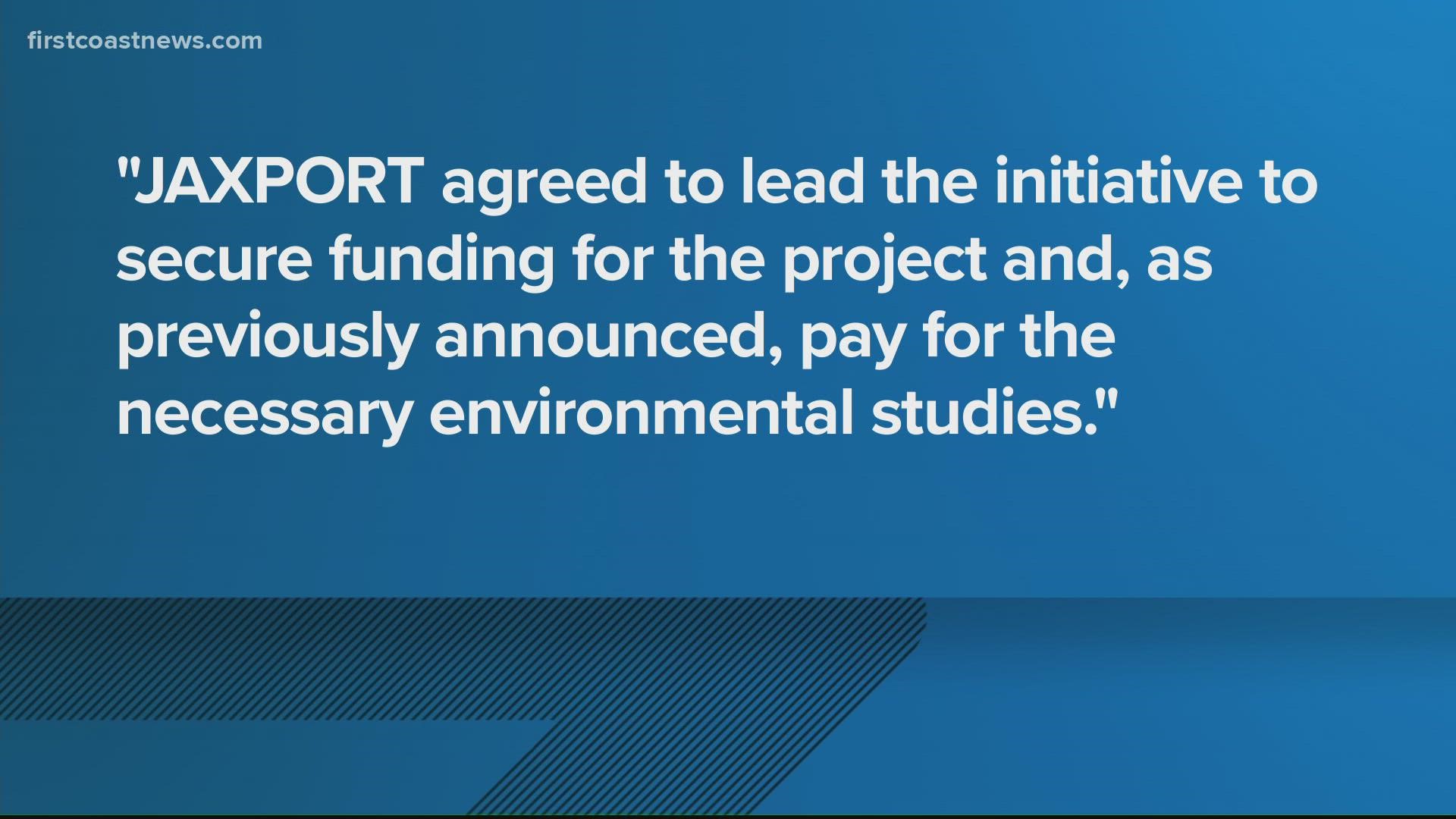JACKSONVILLE, Fla. — A plan to raise high voltage transmission lines across the St. Johns River got the tacit support of JEA Board members, even as they declined to foot the bill.
At its Tuesday meeting, the JEA Board responded to increasing pressure from JaxPort officials to get the project underway.
In a letter first reported by news partner the Florida Times-Union, JaxPort Board member Jamie Shelton wrote Gov. Ron DeSantis in March complaining, "The continued failure of JEA to immediately begin the process of raising the power lines will place JaxPort and the State of Florida at a disadvantage in attracting new vessel services."
At a March 28 board meeting, Shelton commented, “We need to stop the foot-dragging and for JEA to commit to raising the power lines, and most importantly, join us at the table for discussions about how to get it done."
At Tuesday’s meeting, JEA Board Chair Bobby Stein addressed the comment directly. “One thing that has come out is we ‘hadn't been at the table.’ We have been at the table, and we need to continue to be at the table.”
At issue is whether to raise transmission lines at what’s called the Fulton Cut from the current 175 feet to 215 feet. The cost, according to a 2020 JEA study, would be about $30 million. In a statement, JaxPort said, as of Friday, the agency had "agreed to lead the initiative to secure funding for the project and, as previously announced, pay for the necessary environmental studies."
The commitment to pay for the project did not appear to have reached JEA Board members. Board member John Baker, who until recently served on the JaxPort Board, said, "We've got to just sit down and figure out who's gonna pay for it. And until that happens, nothing will happen.”
The demand to raise the lines is a fairly recent development in a years-long project. JaxPort is nearly finished with a river dredging project designed to accommodate larger post-Panamax ships.
The dredge was initially proposed as a 13-mile project, extending to port facilities beyond the Dames Point Bridge, which has a 174-foot clearance. At the time, JaxPort officials assured city leaders the bridge would not need to be raised.
The dredging project was later reduced to just 11 miles to cut costs. That means big ships would no longer have to pass under the 174-foot bridge – but will still need to pass under the 175-foot transmission lines.
JaxPort officials, who said in 2017 that there was no pressing need to raise the lines, now consider it a more urgent matter. In August, JaxPort CEO Eric Green dubbed the current height of the transmission lines a “safety risk,” and a JaxPort study calls them a “navigational hazard.”
Asked about the turnaround, JaxPort provided a Memorandum of Understanding that says the St. Johns Bar Pilot Association "recently identified that the current height of the transmission lines poses a serious navigational safety risk to the larger vessels being phased into the Port of Jacksonville such that they cannot currently call on the Port," It also says the port has "already had to reject shipping vessels ... due to the air draft restrictions that impose a navigational safety risk."
In a March 30 letter, the U.S Army Corps of Engineers -- the permitting agency for both the dredging and the transmission lines -- said it is aware of concerns about the height of the wires and "shares those concerns." However, the agency said it preferred not to require any action until it can conduct its own analysis.
In a 2017 lawsuit opposing the project, the St. Johns Riverkeeper challenged a cost-benefit analysis conducted by the Army Corps. The Riverkeeper claimed that not including the cost of raising the power lines – something both Corps and JaxPort officials said wasn't immediately necessary – made the project appear more financially palatable. Including those costs would likely have put the project outside the accepted matrix to qualify for federal funding.
For that reason, the Riverkeeper said, the Corps analysis was “fatally flawed.”
But the need to raise the lines was not disputed by JEA board members Tuesday. Baker said the issue was not whether the lines should be raised, but who will pay to raise them.
“Raising the lines is something that needs to be done … Because ships are getting bigger and the dredging that's going on at the Port would literally be wasted if the lines were not raised.”
“The issue becomes who's paying for it,” Baker continued. “And I think [CEO] Jay [Stowe] has been very steadfast and very correct in saying JEA’s ratepayers should not be paying for it."

